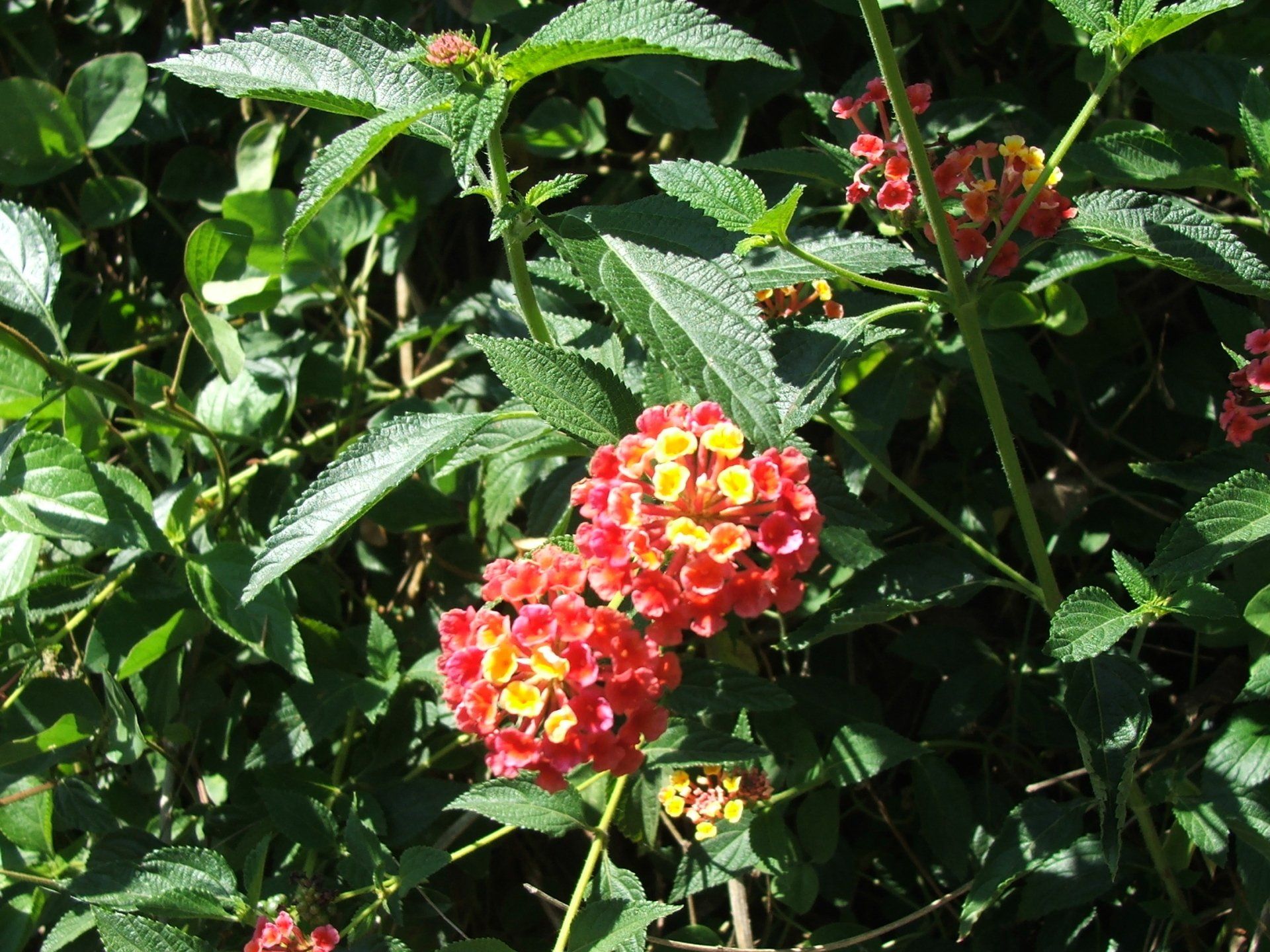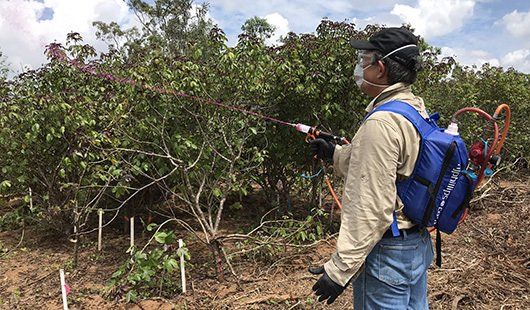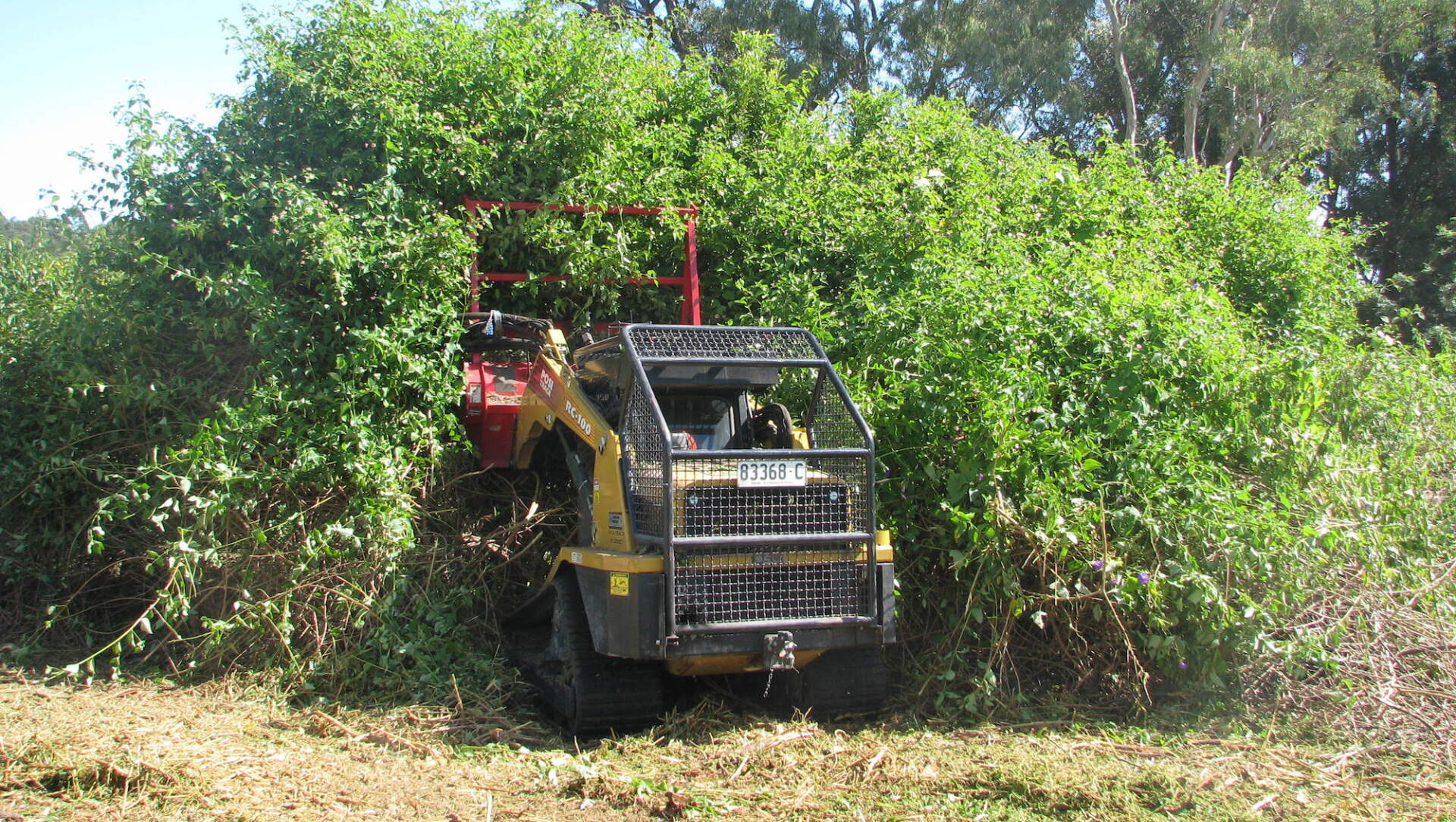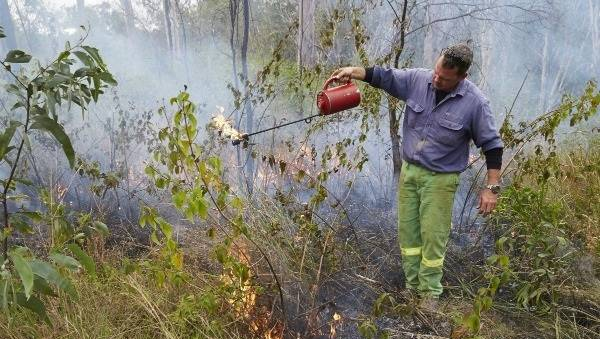Weed Control
Lantana often makes up the unnaturally dense mid-storey layer associated with BMAD, although it can be other weeds or invasive native plants such as Cissus sp. (Water Vine). By removing mid-storey weeds, native forest structure and bird diversity can be restored, disrupting the BMAD cycle. There're several options for weed control, including herbicide, physical removal and fire. The key to achieving the best results when dealing with mid-storey weeds is to follow a method most appropriate for the situation - the site and your capacity.
Standard methods for lantana control are listed below.

Lantana
Lantana is an exotic, heavily branching, scrambling shrub that grows from 2 to 4 metres tall. It is native to central and south America and was first introduced to Australia in 1841. Lantana is a Weed of National Significance due to its impacts on primary industries, biodiversity and conservation.
Lantana spreads mainly by seed from birds eating the fruits and passing the seed on. Lantana seeds need lots of light, warm temperatures, and plenty of moisture to germinate. In dry conditions, seeds can remain viable in the soil for up to five years. Lantana also spreads vegetatively by suckering from stems.
Splatter Gun
The splatter gun herbicide application method is by far the most cost effective with the least off-target damage when dealing with Lantana and BMAD. Splatter gun is a low volume method that uses a high concentrate herbicide mix.
The method involves squirting large droplets of herbicide onto foliage from 6-10 metres away. Because the herbicide is so concentrated, you don’t need to cover all the foliage, which makes this method useful in areas that are difficult to access or with sensitive vegetation, and it’s great for initial control when you can’t walk through the weeds.


Cut Stump
This method involves spraying or painting a concentrated, oil-based herbicide mix to a cut area of a weed stump. Cut the stem 5-10 cm above the ground and apply herbicide to the cut surface within 15 seconds. Do not apply herbicide to wet or charcoal-covered stems as this can repel the herbicide mixture and treatment will be ineffective.
The method can be used year-round but is best when plants are actively growing. This method is useful for sensitive vegetation, or where the land is prone to erosion, as foliage can be cleared while keeping roots in the ground. It’s also a good method to use for follow up control where the plants are isolated. Stumps will need to be checked for growth, however.
Physical Removal
Another option is to physically remove weeds by hand or using machinery. Isolated plants can be hand-pulled or chipped out with a mattock or plant-popper. Always wear gloves and eye protection. If you’re dealing with lantana, be sure to remove the roots and stems, otherwise the plant will regrow from any pieces left in the soil. Machinery can also be used to remove lantana by bulldozing or slashing. If stems are left behind in this process they will survive and reshoot, but they can be targeted for follow-up control with herbicide. Heavy machinery can disturb the soil leading to to erosion or invasion by other weeds.


Fire - for follow up only
Fire can be used to suppress weed growth, although it is not recommended primary as weed management technique for dealing with lantana for a few reasons. Firstly, the structure of untreated lantana is not conducive to burning under a cool burn regime. Soil moisture and microclimate in protected gullies will also impeded flame development. Meanwhile, using a hot fire, particularly under dry conditions, untreated lantana will burn and risks laddering the fire into the canopy which will damage forest and increase the risk of the fire becoming uncontrolled. Hot fire will also destroy soft vegetation, native grasses and soil seed banks, leaving bare ground which carries the risk of erosion and weed invasion. In either situation, Lantana is not always killed by fire and plants can recover. Because of these reasons, fire is not the place to start with lantana control. However, it could be useful as part of a follow up treatment in appropriate areas such as dry open sclerophyll country to maintain grassy or shrubby native vegetation or in ecotonal areas grading from dry to wet sclerophyll where you have a specific objective to push back mesic (wet raifrest type species) from growing into open grassy eucalypt country. Fire should never be used in rainforest.
Northern Rivers Fire & Biodiversity Consortium inc.
This project is supported by North Coast Local Land Services, through funding from the
Australian Government’s National Landcare Program and the NSW Department of Planning, Industry and Environment
through funding from the Saving Our Species Program.
